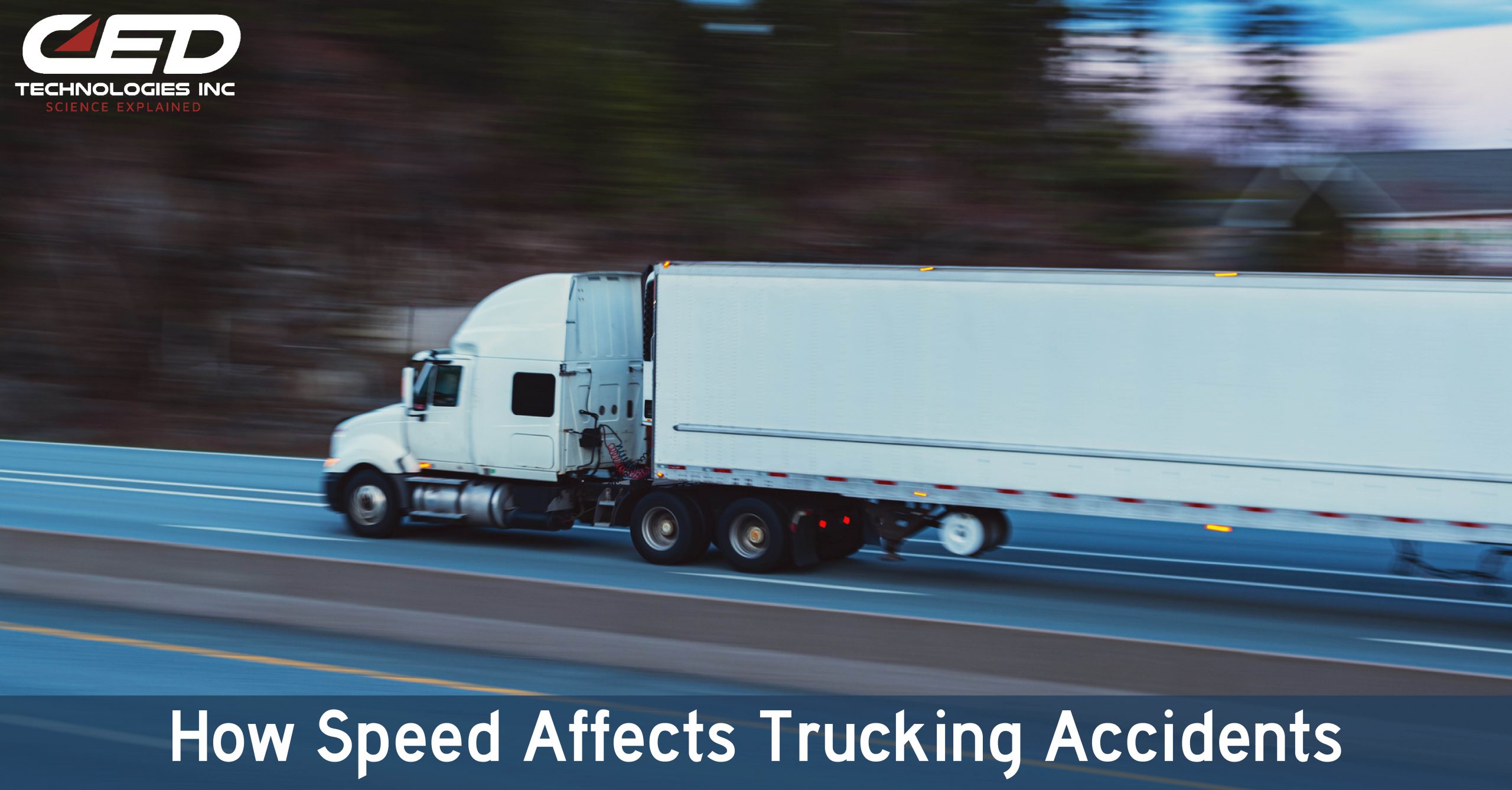Speed is the number one cause of fatalities in heavy truck accidents. In 2019, the Insurance Institute for Highway Safety (IIHS) reported that most deaths in heavy truck crashes are occupants of passenger vehicles struck by the truck. The primary reason for this is the mass difference between passenger vehicles and heavy trucks. Heavy trucks can weigh up to 80,000 lbs which is 20 to 30 times the mass of typical passenger vehicles. That means, at the same vehicle speed, heavy trucks have 20 to 30 times more momentum and kinetic energy. More weight requires more stopping distance to avoid a crash. And if the crash is not avoided, that extra momentum and kinetic energy gets dissipated by creating crush damage and injury.
A passenger vehicle traveling under a specific set of conditions at a speed of 65 miles per hour would take 316 feet to stop – the approximate length of one football field. In comparison, a fully loaded tractor-trailer weighing 80,000 pounds, traveling under the same conditions and at the same speed, may take up to 525 feet to stop – almost the length of two football fields.
Three factors come into consideration when determining a truck’s total stopping distance:
- Perception Distance – the distance a vehicle travels while the driver identifies, predicts, and decides to slow down for a hazard. This is the distance traveled from the time a driver sees a hazard—such as a car’s red brake lights—until their brain recognizes the hazard. The time required to perceive a hazard is highly dependent on the specific conditions. For this example, let’s assume the average is 1.75 seconds. At 55 miles per hour, an 18-wheeler continues at that speed another 142 feet before the brain even thinks to stop.
- Reaction Distance – the time required to execute a decision once the hazard is recognized. The time it takes for a driver to 1) move their foot from the accelerator pedal to the brake pedal and 2) apply enough pressure with their foot to develop significant braking force is also highly dependent on the specific conditions. Continuing the example from above, let’s say it takes another 0.75 seconds. At 55 mph, that’s another 61 feet of travel.
- Brake Time/Distance – the distance a vehicle travels from the time the driver presses the brake until the vehicle stops. Depending on the specific conditions, a truck driving 55 mph on dry pavement with good brakes, could travel another 216 feet before stopping. With malfunctioning brakes, the truck would take even longer to stop.
Of key importance to remember is that whenever a driver doubles their speed, they quadruple the required stopping distance to avoid a crash. The lesson to be learned is that by simply slowing down, the trucker can reduce their braking distance and, consequently, the likelihood of being in a crash.
Taking into consideration other components, such as roadway conditions, brake malfunctions, and driver fatigue, large truck accidents require expert investigators to determine causation. CED’s Transportation Group was formed for just this purpose – to investigate accidents involving any mode of transport: tractor trailers, automobiles, trucks, motorcycles and other motorized vehicles. If you have a case that requires the comprehensive expertise of our Transportation Group, submit an inquiry online.
Click Here To See Our Full List of Experts Click Here To Submit an Inquiry about a possible Claim or Case.






